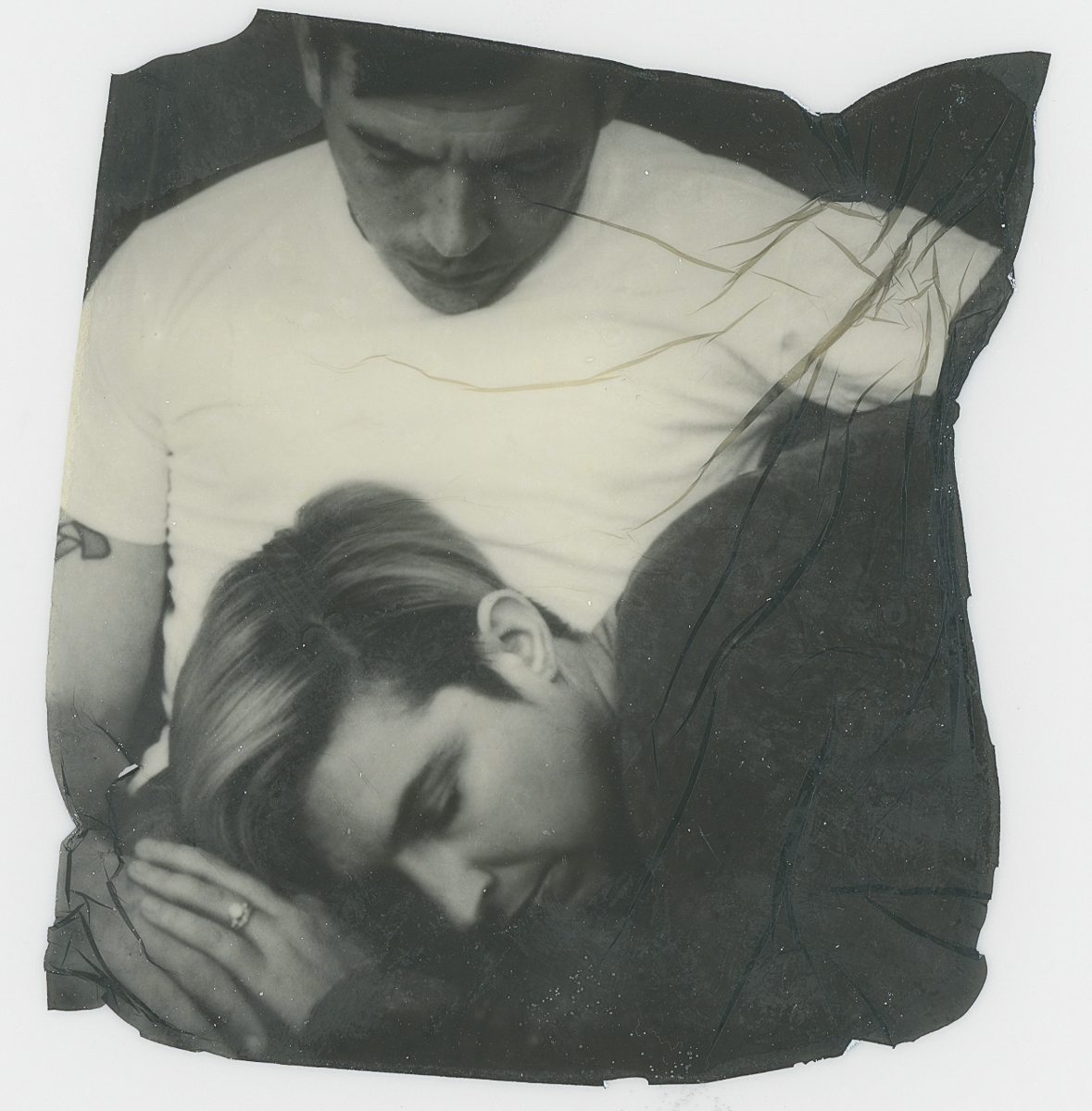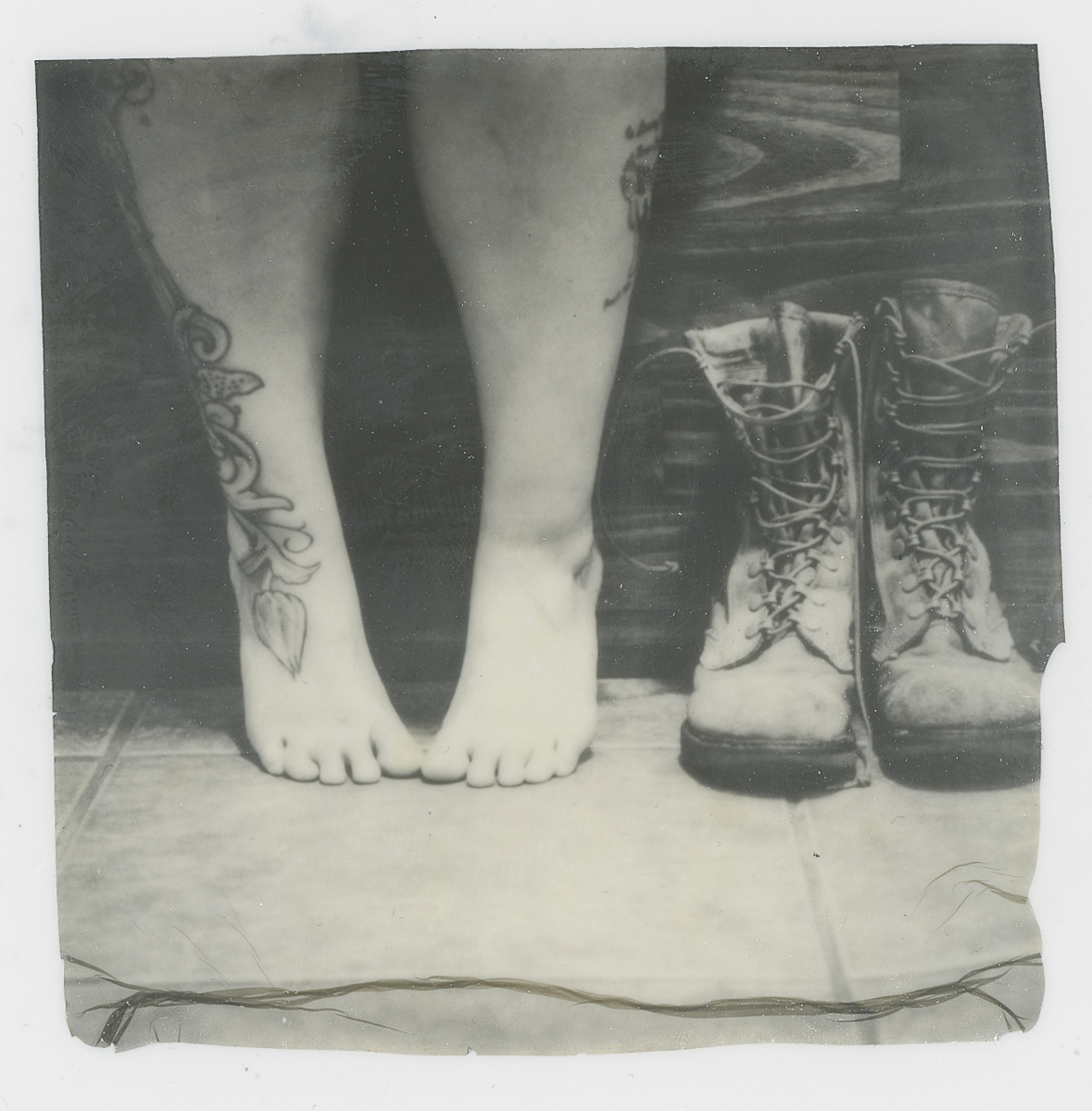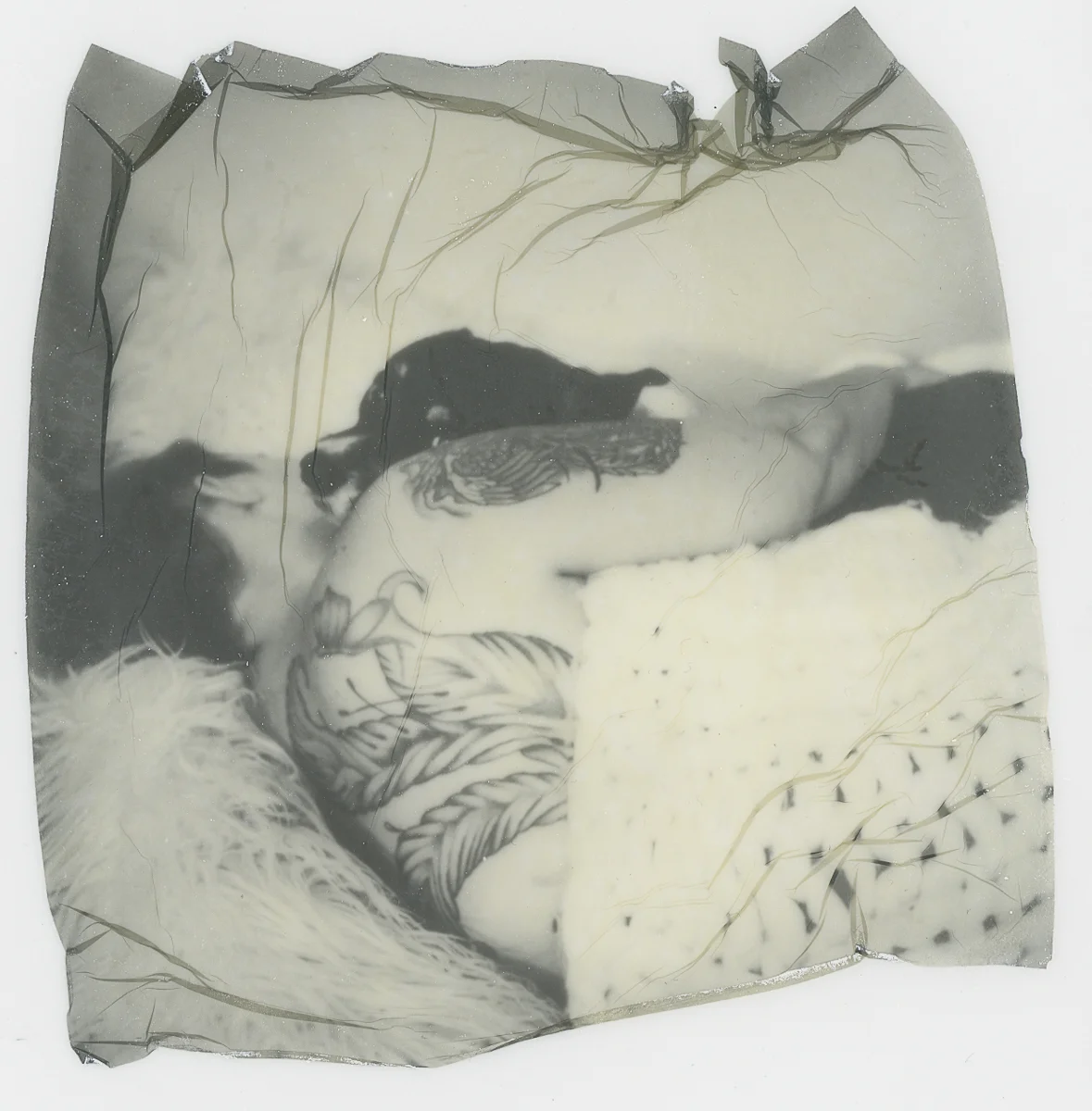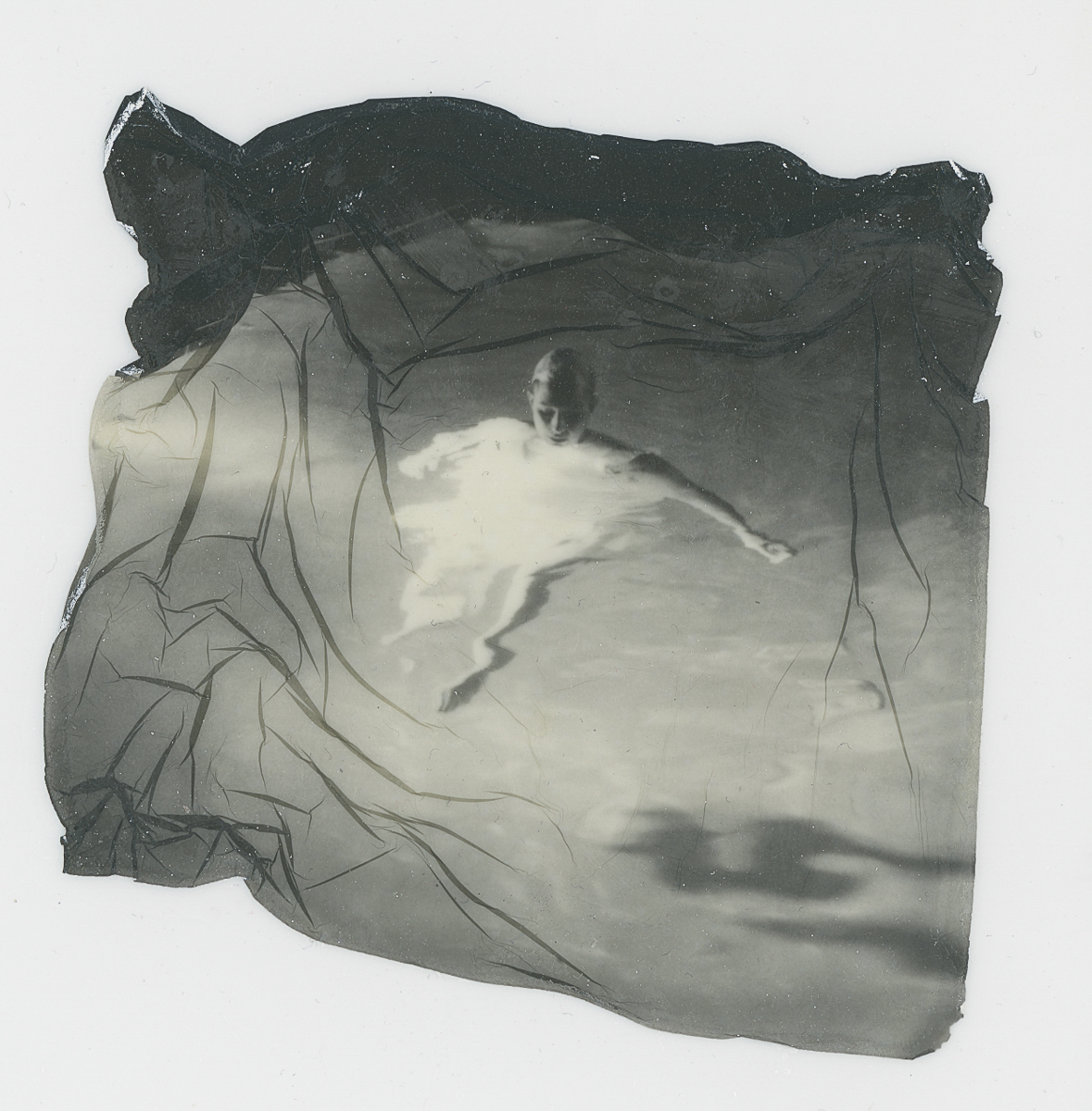Ronni Mae Knepp interview
August 19, 2019
Interview conducted by Blue Mitchell | Edited by Nicole Sharkey
A while back I received a submission from Ronni Mae Knepp with an introduction to herself and her work. It was an engaging letter that sparked several enjoyable conversations. Knepp is an excellent writer and the timing was such that I figured it was time to do another in depth interview for our readers. As you will see, Knepp is an ideal candidate for doing a more extensive feature.
Fair warning, the subject matter in her work involves rape and PTSD. However, it also involves resiliency, the need for compassionate connection, and the possibilities of healing through engaging yourself wholly into your artistic process. I am deeply moved by Ronni’s story and her work and I am proud and pleased to be able to share her experience with you.
I hope that reading her interview will not only give insight into the Dear John Doe series, but also into the emotional journey of the amazing woman who walked through the pain of her experience and transformed it.
Blue
Blue Mitchell: Let’s just jump right in! I read that you were in the military before taking up photography. What branch were you in?
Ronni Mae Knepp: I spent 9 years in the Air Force. My dad is retired Navy and my third husband is still in the Army. I joke that I just “bleed” military because it’s such a big part of my life.
BM: Tell me about your journey from veteran to fine art photographer and what led you to photography?
RMK: I grew up doing a lot of creative things: at a young age, I learned to sew and crochet and would steal my mom’s Polaroid or her point-and-shoot 35mm camera. I even learned to play sax and became one of the best in the state. I also got pregnant at a young age, so instead of pursuing the arts, I joined the military for its dependable income. I’m 5th generation military and my dad, who I looked up to, had been in service since before I was born. It felt right for me to continue the family tradition by enlisting. After I finished basic training, my first duty station was in Germany. As soon as I could afford it, I bought a 5-megapixel point-and-shoot camera and photographed the German landscapes. As much as I loved it, I considered my photography a hobby; I simply needed a creative outlet. I’m also a very rational person and my initial plans for college involved more pragmatic degrees like Communications, Psychology, and I even tried a short stint in IT Management with a minor in Web Design. Unfortunately, I was bored with all of it! Finally, my second (and now late) husband suggested pursuing Photography. It was the perfect fit for me and something I already enjoyed doing (despite not being very good at it in a technical sense). I started at Academy of Art University [AAU] summer 2010 (while I was still in the military) and began my undergraduate work with a plan to do fashion photography, which was another effort to be practical! Within a couple of semesters though, it became clear that fashion photography was not for me. However, I discovered that conceptualizing and telling a deeper story through the use of images was something I deeply enjoyed. That set me up to fall in love with Fine Art photography and all of the creative opportunities it affords with alternative processes and analog film. I have stuck with it ever since —with an occasional wedding here and there. Ha!
BM: You talk about addressing PTSD in your work. Outside of your newest series Dear John Doe, are you gleaning primarily from personal experience or are you working with other people’s experiences to address these issues?
RMK: I actually started working with PTSD as a concept in my undergraduate days. Initially, I was using photography in an effort to literally show how I view my world while coping with PTSD, anxiety, and depression. Back then I wasn’t very effective with it, so that earlier work has since been removed from my website. Currently, I have been using images to help make sense of my post traumatic stress on an interpersonal and connective level. Not all of my MFA concepts overtly address PTSD, but most of my work is based on, and an extension of, my sexual trauma and how my survivor identification creates connection with other survivors. For example, in Dear John Doe, I have been reaching out to other rape survivors and people with PTSD. When I do or when people learn I have PTSD, most people assume it’s from combat because I was in the military, but it’s not. Only a small portion of my [mental health challenges] are related to my military career. Most of my PTSD is not only from the rape, but from the attitude of the military and how they responded to this violent crime. What I found by talking to other PTSD and rape survivors is that many of our triggers and symptoms are similar, even if the initial traumas were completely different. So, though my project is an autobiography, I periodically reached out to others and asked them if the work resonates in some way with their experiences. It was important for me to make this as universal as possible while keeping it distinctly personal. One thing I don’t do is documentary work. There are a lot of photographers out there with a passion for it, but that’s not me. I want to listen to the stories and be a sounding board for the survivors; I don’t want to then have to translate that experience into a documented piece of work.
BM: Does photography work as a medium for this? How?
RMK: At first, I was using it primarily as another language. I know how cheesy that sounds, but it’s the best description for what I was attempting to do. One of the side effects of my PTSD is that I’ve disassociated myself from my rape experience. I am very emotionally detached from my story, so I can talk about what happened all day long without any feeling. Unfortunately, this also means that most therapy methods don’t work on me, including EMDR [eye movement desensitization and reprocessing, which is widely used to heal PTSD symptoms]. As to using photography as therapy, I really didn’t expect much to happen. While I was working on the initial thesis images, which were all either digital or scans from 120mm film, I was really just going through the motions of showing my story through photos. I used the actual letter I had written to “John Doe” [rapist] as my artist statement and it was my way of being blunt and honest about the pain. The photos then became softer representations of the trauma. After I passed the thesis proposal, I started experimenting with better methods of showing my story. I started with Polaroid emulsion lifts, which ended up being the best method (even after trying all other processes). It was the perfect marriage between the concept, my story, and what I physically and emotionally go through every day. Then last semester, right before I initially reached out to you, something pretty interesting happened: I was doing multiple emulsion lifts in a short period of time for finals. I needed to be very focused and slow and methodical with the process, which forced me to really think about what each image represented within my narrative. By the end of doing the lifts, I actually remembered doing my rape kit [a sexual assault forensic exam to preserve DNA to be used as evidence], which is something I had completely blocked out since it happened. Intellectually, I knew the exam had happened; I remembered that I had done it, but now I remembered the intense emotions that came over me while it was happening. I broke down in tears and couldn’t pick up my camera again for weeks.
Since that recall experience, I have been much more alert to the possibility of trauma memories surfacing while I’m processing my images. I am more careful about scheduling myself for the emulsion lifts; I try to be aware of my mental state of mind and make sure I am able to break away from the work as often as I need. I have also learned that “phototherapy” has become widely popular for PTSD/rape victims because it uses a different portion of the brain that can break through the disassociation. For me, that part of the therapy process — the breaking through the disassociation — seems to happen mainly when I’m working with my hands. I also learned that doing alternative processes has, for me, been the most cathartic and it also captures my thoughts and vision most accurately.
“photography allows me to gently tell a story that is otherwise too painful and/or difficult to hear.”
To shorten a very long answer: photography allows me to gently tell a story that is otherwise too painful and/or difficult to hear. It’s also done for me what no other therapist has been able to do, which is provide a way to work creatively with my anxiety, depression, and PTSD.
BM: Wow, your willingness to express your experiences and show vulnerability truly shows your strength! There are so many layers here. You’re addressing an important and sensitive subject in Dear John Doe, so much so that I’m having trouble comprehending how you’ve managed to rise to the occasion of dealing with the subject matter on top of earning your MFA degree. Major kudos. So what’s next after the dust settles?
RMK: Thanks! It’s definitely been a whirlwind. I still have another semester (Fall 2019), so I won’t graduate with my MFA until December. I placed first with my thesis at AAU’s 2019 spring show, which was a really big surprise for me. I had single images in it as well and it was a huge honor to win since so many of my peers did incredible work. I’m not taking any classes this summer, so I’ve got a few things going on. For one, I want to get some of these resin blocks done, which take quite a bit of time. I am also doing a “mini” version of Dear John Doe as bleached cyanotypes. I’ve got one set done and I’m going to bind that set into a book, likely with traditional hand binding techniques. I’ll include a lot more notes from my processes for both the cyanotypes and the emulsion lifts: not necessarily a how-to thing, but more a behind-the-scenes look into how I achieved the final projects. I am really excited about that part of it because so many people have expressed curiosity about the process and how it came about. I’m also looking to publish Dear John Doe, so that it will be more accessible to other survivors. That project is pretty high on the to-do list as I hope to use the momentum of this project’s appeal to get more of my work shown.
In my other work, I have a project I’ve been slowly working on since I started my MFA (about 3 years ago). It started as an exercise in getting used to seeing myself in photographs. I took a lot of pictures of myself and I was also doing a lot of self-portraiture. But each semester I kept continuing with these self-portraits, so the “selfie experiment” continued to evolve and now it’s become its own thing. I use selfies and captions to compare how I portray myself to the world versus how I’m actually feeling and I have another self-portrait project brewing in my mind. I also have a desire to work more with polaroids, exploring the use of light and shadow and form (one of my favorite things to shoot). And, I’m starting on another project in memory of my youngest sister who died while I was still working on my BFA. Then coming up in the fall, I’m taking an elective, have an internship to teach online, and have one last Business class requirement to finish off my MFA. I’m hoping by the time I finish all of that (after Christmas maybe?), I will have some job prospects teaching undergrad photography classes.
“When I switch modalities, I create a fresh perspective every time I switch back.”
I am really ambitious and now that I can shift my focus from the heavier topic of my thesis, I have quite a few ideas forming that I want to work on. I want to work on more of the formal and traditional aspects of photography, but this time using medium format film. I’ve missed being able to focus on the fundamentals and, since I have quite a few projects heavy in concept, I think working on the formal stuff again will be a great balance for me. It’s stepping out of your comfort zone, trying new things, and then coming back to that niche you know you’re good at. When I switch modalities, I create a fresh perspective every time I switch back. Having multiple projects going might be overwhelming to some, but I’m honestly excited to have so many creative avenues to explore without the strict confines of weekly assignments. Seriously, I hate wasting rolls of film just for one frame! Ha!
BM: Let’s talk about the bigger picture. What are some of your influences? What sort of artwork are you drawn to?
RMK: I find so much inspiration in SO many different things. Photographers…? Keith Carter, Jerry Uelsmann, Alfred Stieglitz, Edward Weston, Paul Caponigro, Mona Kuhn, Susan Burnstine, and even one of my classmates, Troy Colby, inspired me with his authenticity. I think that’s what really draws me into an artist’s work: discovering some sort of authentic part of the artist revealed through the image or process. And, quite honestly, you were a huge influence for quite a while and still are. At the beginning of my MFA, while working on the early stages of my thesis, I knew I wanted to say something without depending only on digital photography. I needed to get my hands dirty (which is also where the cathartic element of photography is for me). Seeing projects like Evanescent Energy provided the permission I needed to step outside the box and do something different. I connected with so many of the “unconventional photography” projects as well as your method of working. I would get excited and think, “Yes! Someone else understands!” Another newer favorite is Jo Howell. She and I are apparently following each other and I’m trying to find the courage to reach out to her to do a collaboration. I am dying to do collaborations; I miss having that teamwork with like-minded individuals.
“I’m a huge sucker for jazz! ”
I also grew up in a really creative family and everyone is musically inclined. I have quite an eclectic love for music, so a lot of times the music that happens to be playing can influence my work too. I’m a huge sucker for jazz! I also enjoy everything from country to hip hop to rock to ska! Also, I love writing! I took every writing class I could in both my BFA and MFA programs. I even stayed connected to my writing professors, who were surprised to learn I was a photography major and not a writing one. Ha!
Truthfully, I can find inspiration in just about anything. As far as being drawn to artwork, I don’t know if there’s any sort of formula for that. I am certainly awed by the skill of painters. I can’t draw a stick figure to save my life, so anyone who can do more than that amazes me. When it comes to photography, I am most drawn to work that makes me question not only how they made it, but why? I am very 50/50 with process and concept (very right brain/left brain). I am sensitive to work that feels cliche, including my own. I hesitated with my emulsion lifts for my thesis because I didn’t want them to be gimmicky. I think I just want to see something honest [in art]. Even if the artist is honestly just having fun! Show me experiments! Show me how you think and how you work! That’s the fun part of it. I love seeing how everyone is so creative in so many different ways. It’s inspiring to compare them as a way to discover and celebrate our beautiful differences. For example, Mona Kuhn’s flowers and nudes are absolutely jaw-dropping, but if I were to shoot the same exact thing, it wouldn’t look like a Mona Kuhn flower. It would inevitably look like a “Ronni Knepp” image and that integral truth really fascinates me. I love all arts and creative minds and appreciate them for what they are and the work they do. Having said all that, my favorite works of art will always be the ones that feel the most authentic to the artist and the most revealing. Maybe it sounds super cheesy or weird, but if I can feel that energy from the artist and that passion when seeing a piece of their work, that’s what will speak the loudest to me.
BM: Ronni, thanks for your kind words and spending time discussing with me and our readers. It’s a pleasure to learn more about you. To wrap things up, what might your “working in the studio” soundtrack look like?
RMK: Of all the questions asked, this is the one I got stumped on! I asked my husband and he said, “Whatever is currently in your iTunes playlist.” My oldest son said, “It has to be angsty!!”, which is the word I use when I’m struggling with depression. My parents said it would definitely include some “Train” because that’s what my sister Jodi and I listened to all the time. And they’re right! Honestly, my soundtrack would be a hodge-podge of songs, so here’s what I think mine would look like as of today:
“Play That Song” by Train
“Don’t Stop Believing” by Journey
“Two Hands Up” by O.A.R.
“Monsters” by Timeflies
“Bulletproof Picasso” by Train
“Shut Up and Dance” by Walk the Moon
“Long Distance Love” by Rommie
“Glowing in the Dark” by The Girl and The Dreamcatcher
“Missing You” by Alison Krauss and John Waite
“Angel in Blue Jeans” by Train
“Peace” by O.A.R.
“Good to be Alive (Hallelujah)” by Andy Grammer
“Invincible” by David Archuleta
“Fire” by Gavin DeGraw.
Ronni Mae Knepp is an American Fine Art Photographer that specializes in black and white postmodern photography. Ronni originally majored in Communications when she was in the military and continued to pursue other technical majors before she came back to her love of photography in 2010. She completed her undergraduate degrees in Photography through the Academy of Art University (AAU) in 2015 and 2016.
Ronni is currently working on her Masters of Fine Arts in Fine Art Photography and will graduate in 2019 from AAU. Her work utilizes environmental and self-portraiture to illicit emotionally charged memories from herself and her viewers. Many of her current projects illustrate the emotional and mental impact of sexual trauma on the psyche. Her thesis, Dear John Doe, confronts her own rapist while also giving voice to the many untold or forgotten stories of rape survivors.
Ronni hopes to help build awareness for Post Traumatic Stress Disorder (PTSD) as well as women’s rights through her photography. Her future goals include teaching at the collegiate level while also working within her field. She currently resides with her husband and kids in Texas.
Read more interviews on our blog or visit the Diffusion Tapes to listen to more in depth conversations with writers, curators, and makers of fine art photography.







